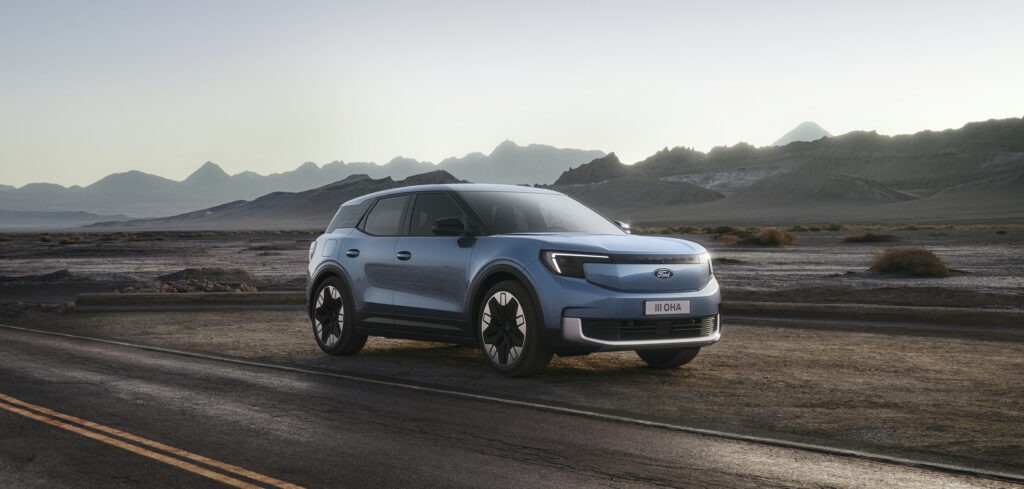Did the EU’s new-car market return to growth in April?
23 May 2024

How did the EU’s new-car market perform in April following a difficult March? Autovista24 special content editor, Phil Curry, examines the latest numbers from the European Automobile Manufacturers Association (ACEA).
The EU’s new-car market returned to growth in April. Every powertrain recorded a positive result in what was a critical month for the industry.
Figures released by ACEA show registrations increased by 13.7% year on year in April. A total of 913,995 units were delivered to customers across EU member states in the month. This was driven by strong growth in the bloc’s big four markets, as well as impressive battery-electric vehicle (BEV) results from some smaller regions.
Following a decline in March, due mostly to the early Easter, it was important for deliveries to bounce back quickly. If not, concerns would be raised over how the market would perform across the remainder of 2024.
However, the growth in April was strong, showing a likely carryover from the extra holiday days at the end of March. This suggests that new-car registrations will continue to be positive in the coming months.
Big four balance
France, Germany, Italy and Spain all saw registrations growth in April, following struggles in March.
Spain was the strongest market of the big four in terms of registrations, posting a 23.1% year-on-year rise. Germany was next, with a 19.8% increase, followed by France with a 10.9% improvement in deliveries, followed by Italy with 7.7% growth.
These markets helped the EU achieve its strong performance in April. All but seven markets posted a rise in registrations. One of the most significant drops was recorded in the Netherlands, with deliveries down 3.8% on a larger volume of units.
Powertrain shakeup
During April, a total of 108,552 new BEVs were registered in the EU, up 14.8% compared to the same month last year. This gave the zero-emission powertrain an 11.9% market share, only up slightly from the 11.8% recorded in April 2023.
This stalling share gives more weight to concerns of a slowdown in BEV sales. Despite the monthly delivery growth, other powertrains are increasing their unit deliveries at a faster rate. This is cannibalising the BEV market share, causing its slowdown.
Meanwhile, the bloc’s BEV market continues to diversify. Italy and Spain still struggled to attract buyers to all-electric cars. On the other hand, both Belgium and the Netherlands enjoyed BEV registration growth while their overall markets fell.
Belgium’s entire new-car market shrank by 0.4% in April, while its BEV registrations increased by 41.6% to 9,181 units. All-electric car deliveries climbed by a more modest 9.6% in the Netherlands (9,092 units), while its wider market dropped by 3.8% year on year. So, the all-electric car markets in both countries easily outperformed those in Italy (3,190 units down 20%), and Spain (3,842 units up 11.8%).
Instead, it was the drop in petrol and diesel registrations that pulled overall figures down in Belgium and the Netherlands. In the former, petrol declined by 3.5%, while diesel dropped by 44.7%. Meanwhile, in the latter petrol deliveries fell 37.4%, while diesel grew 6%, but only to 534 units.
Belgium also struggled with its plug-in hybrid (PHEV) market, which ended April down by 17.6%. Both countries are seemingly reliant on sales of all-electric models to ensure overall registrations growth.
BEV market struggles continue
In the year-to-date, both Belgium and the Netherlands recorded doubled the number of BEV registrations seen in Italy and Spain. This is despite having a much smaller population and car parc.
This struggle for Italy and Spain is not a new phenomenon. Both have found it difficult to tempt drivers with all-electric technology so far this year. Any increases are the result of comparatively lower numbers from 2023.
Across the first four months of the year, Italy saw 16,515 BEV deliveries. Meanwhile, 15,219 new all-electric models took to the roads in Spain. In terms of year-to-date market share, Italy represents 3.7% of Europe’s total BEV registrations. Spain made up 3.4% of the EU’s new BEV market. This is compared to Belgium’s 9.1% share and the Netherlands’ 8.9%.
Meanwhile, market leader Germany came under increasing pressure from France. This followed the ending of incentives last year, with Germany accounting for 25.1% of the EU BEV market in the year to date.
So far this year, the total EU new-car market has seen BEV registrations rise 6.4% year on year. However, a slowdown is underway with BEVs making up 12% of all registrations, the same as recorded in the first four months of 2023.
Hybrid market heaven
Hybrids, made up of full hybrids (HEVs) and mild hybrids (MHEVs), had a very strong April. A total of 265,992 units were registered, up 33.1%. This made the powertrain the EU’s second most popular drive technology in the month. It took a 29.1% market share, up from 24.9% in April 2023.
This strong performance highlights the mindset of many buyers. Many may be looking to the technology as a lower-emission alternative to internal-combustion engine (ICE) models while keeping the practicalities of refuelling.
This growth came at the expense of all other major powertrains. While the BEV share did grow, it was only by 0.1 percentage points (pp). This increase could have been greater were it not for the larger hybrid volumes.
PHEVs performed more poorly in April. The bridge technology saw growth of 3.7% in the month with 62,148 units registered. However, its market share fell from 7.5% in April 2023, to 6.8% last month.
In the year to date, hybrids were again the best-performing powertrain. A total of 1,067,134 deliveries equating to a 22.7% increase over the first four months of the year. The powertrain’s market share jumped 3.8pp to 29%.
PHEVs outgrew BEVs between January and April, as deliveries of these plug-in hybrids increased 6.7%. Although, this was with a lower volume total of 266,345 units. The PHEV market share stalled at 7.2% in the year to date.
ICE continues to lead
ICE vehicles also experienced a strong month in April. Petrol powertrains saw growth of 7.3% year on year. At 328,967 units, this was the largest volume of deliveries in the month. Meanwhile, diesel improved marginally. With 117,931 deliveries, the powertrain was just 41 units ahead of last year, equating to a 0.03% rise.
However, the success of hybrids meant that the ICE market share was destabilised. Petrol ended April with a 36% hold, down from the 38.1% the previous year. Diesel’s share, which has been falling for some time, dropped to 12.9% in the month from 14.7% in April 2023.
In the year to date, petrol’s performance has been slow. With 1,309,532 units, petrol-model registrations have only improved by 1%. Meanwhile, their market share dropped by 1.9pp to 35.6%. Diesel deliveries dropped by 8.2% in the year so far, with its 12.9% market share down by 2pp compared to last year. This means that ICE still dominated the market across the first four months of the year, with a 48.5% market share.



